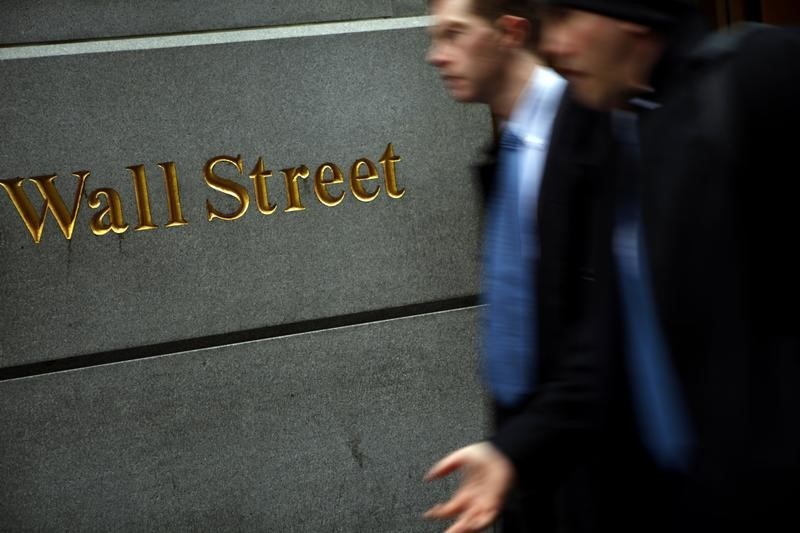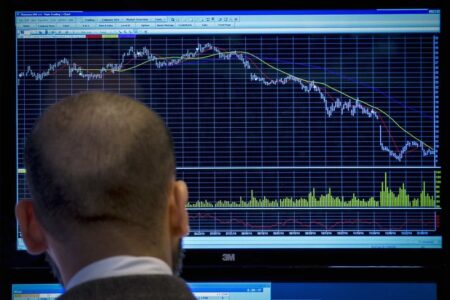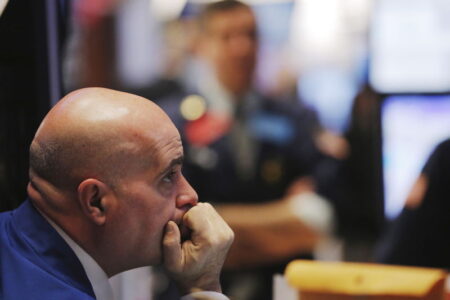© Reuters.
Investing.com — U.S. stocks were rising as bond yields eased back from multiyear highs following a smaller-than-forecast private payrolls report for September.
At 09:38 ET (13:38 GMT), the was up 45 points, or 0.1%, while the was up 0.4% and the was up 0.7%.
Wednesday’s positive news on the labor market was in contrast to a stronger-than-expected report on job openings on Tuesday, which sent Wall Street’s three main indexes lower for the day as bond yields surged. Yields typically move inversely to prices.
The 30-stock Dow posted its worst day since March and the benchmark S&P touched its lowest mark since June. The biggest daily decrease came in the tech-heavy Nasdaq, which fell by 1.9%.
Following the losses, the Dow is now in negative territory this year. However, the S&P 500 and Nasdaq are still up by 10% and 24%, respectively, in 2023, thanks in part to an artificial intelligence-powered surge in tech stocks earlier in the year.
U.S. private sector adds fewer-than-expected roles
The U.S. private sector added far smaller-than-forecast 89,000 jobs in September, according to a by payrolls processor ADP on Wednesday, in what was the slowest pace of growth since January 2021, when private employers shed jobs.
Economists had expected the private sector to have added 153,000 jobs last month.
August’s figure was revised up to show job gains of 180,000 from the gain of 177,000 that was initially reported. September’s steep decline may indicate that the job market in the world’s largest economy is beginning to weaken, a trend that could relieve upward pressure on wages, help cool inflation, and give the Federal Reserve more headroom to back away from further policy tightening.
The all-important monthly report at the end of the trading week will likely flesh out the jobs picture. The U.S. economy is expected to have added 163,000 jobs last month, slipping from 187,000 in August.
Bond yield spike eases after private payrolls
The spike in Treasury yields declined in the wake of the private payrolls figures, as traders yet again recalibrated their interest rate expectations.
By 09:35 ET, the benchmark had edged down by 0.05 percentage points to 4.75%, just under its highest level since mid-2007. The fell by 0.07 percentage points to 4.87%, but remained close to a mark last seen before the financial crisis.
The , which tracks the greenback against a basket of other currencies, also slipped after it was boosted by the surge in yields to near 11-month highs.
Cal-Maine slumps
In corporate news, shares in egg producer Cal-Maine Foods (NASDAQ:) fell 8.9% after it reported first-quarter earnings per share of 2 cents versus analysts’ estimates for 33 cents.
Revenue of $459.3 million missed projections of $473.37 million, primarily due to the decrease in the net average selling price for conventional eggs.
Elsewhere, Palantir (NYSE:) shares jumped 4.3% after Bloomberg News reported that the data analysis group is poised to secure a contract to overhaul the UK’s National Health Service, while Apple (NASDAQ:) stock slipped after analysts at KeyBanc Capital Markets downgraded their rating of the iPhone maker.
Oil drops amid U.S. dollar strength
Oil prices dipped on Wednesday as the jump in the U.S. dollar threatened to make crude more expensive for buyers using foreign currency, potentially hitting demand.
Traders will be monitoring a meeting of the Organization of the Petroleum Exporting Countries and its allies, known as OPEC+, on Wednesday. Saudi Arabia and Russia, two major members of the producer group, decided last month to extend output reductions until the end of the year.
(Oliver Gray contributed to this report)
Read the full article here












